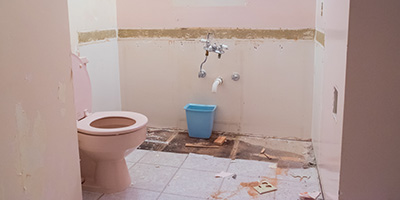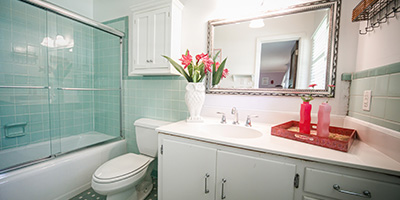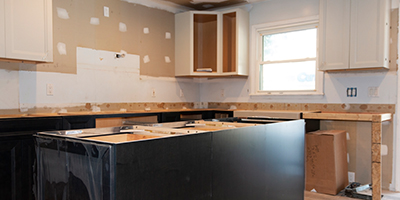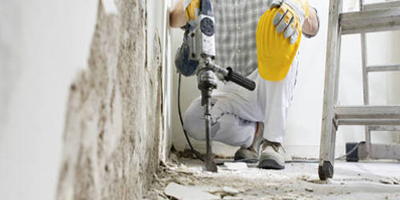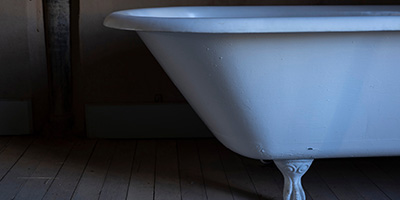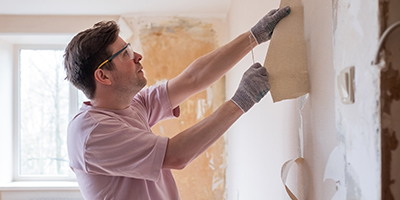Your Guide to Knocking Down a Wall
If you have been wishing for an open-concept floor plan, it might be time to demolish that wall.
Make cleanup a breeze with a roll off dumpster:
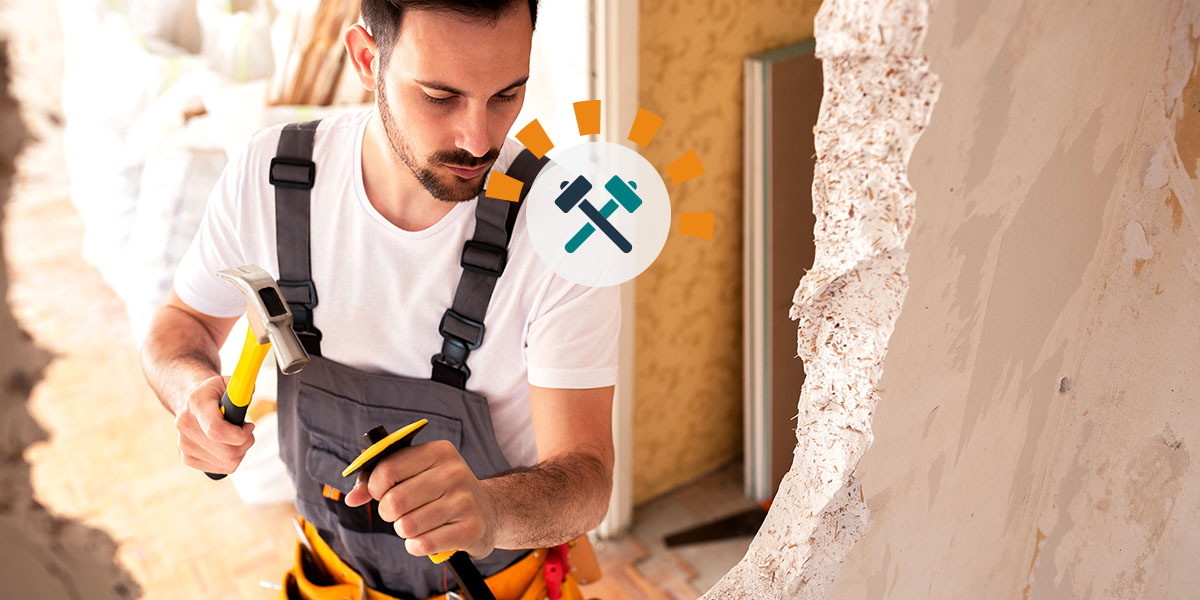
Everything You Need to Know to Remove an Interior Wall
If you’ve been daydreaming about having a clear view from your kitchen into your living room, removing a wall may be your next home project. This job takes some research and careful planning, so you should set aside at least a week for the preparation, demolition and repair.
Here’s what you need to know about creating an open-concept floor plan.
FAQs
Should I rent a dumpster for a wall tear down?
Yes, a roll off dumspter is a fantastic way to handle debris from a wall removal project. Curbside collection won't accept demolition debris, and taking it to the landfill yourself will waste valuable time.
With a roll off dumpster, you can keep your workspace safe and tidy while also tossing everything at once. It's a win-win.
Ready to get a dumpster? Place your order online today.
What do I do if my wall is load bearing?
Identifying if the wall is load bearing is the most important step before beginning this project. If it’s a load bearing wall, consult with a structural engineer to ensure you are going about the project safely. An engineer may suggest installing a structural beam, for instance.
How much does it cost to tear down a wall?
Removing a wall can cost anywhere between $300 and $10,000 depending on the scope of the entire project. Non-load bearing walls run between $300 to $1,000 according to HomeAdvisor. Cost factors include the size of the wall, expert advice and repairs to your ceiling, floor and adjacent walls post-removal.
What should I expect if my wall holds weight?
If your wall is load bearing, tearing it down is a bigger job for a few reasons. It will cost you between $3,200 and $10,000 or more, depending on the scope of the job and if your home is multi-level. In most cases when removing a load bearing wall, you will have to replace support from where the wall was with a horizontal structural beam or a beam and post. This should not be done without professional assistance.
Order a Dumpster Online
Shopping after hours? Too busy to make another call? Book the dumpster you need, when you need it. Order your dumpster online 24/7.
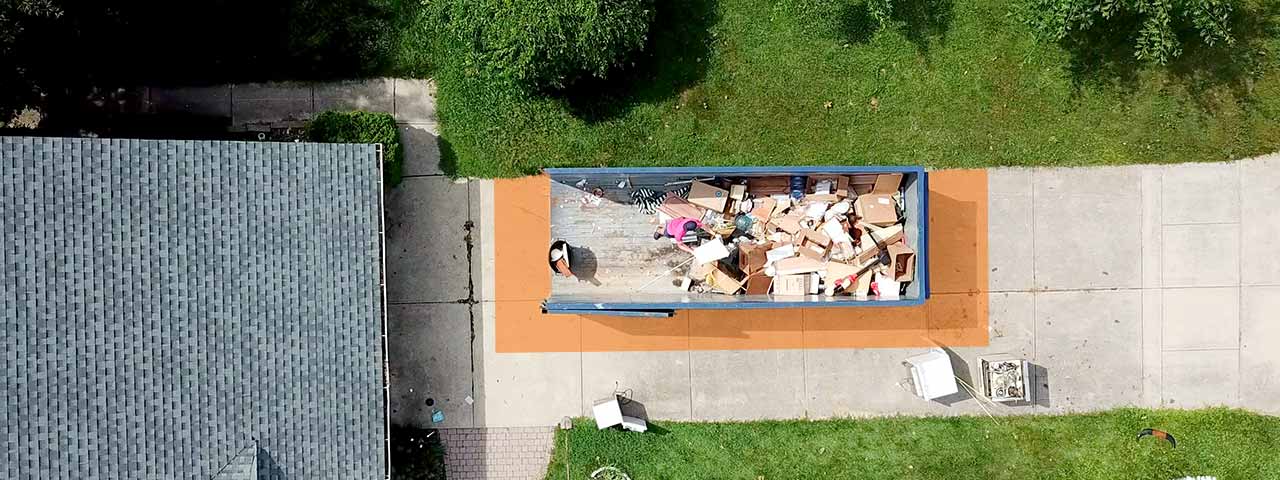
How to Tear Down a Wall in 5 Steps
Step 1: Collect the Right Materials for the Job
Before you start demolition, make sure you have all the necessary tools and equipment needed to remove a wall.
Tools | /////Safety Gear | /////Patching Materials |
|---|---|---|
Reciprocating Saw | Utility Knife | Drywall |
Sledgehammer | Safety Glasses | Drywall Compound |
Pry Bar | Work Gloves | Drywall Tape |
Hammer | Respirator Mask | Drywall Screws |
Electric Drill | Drop Cloths | 2x2 Inch Wood Strips |
Need a dumpster to handle the mess?
Get a Price and Place Your Order Give Us a Call to Learn More
Step 2: Prepare to Tear Down Your Wall
Once you have everything you need to start your project, it’s time to get to work. Follow these steps to get ready to remove that wall:
- Recruit someone to help with the demolition of the wall.
- Cover vents, windows and other fixtures to protect from debris.
- Create partition with cloth or plastic between other rooms to shield them from traveling dust.
- Remove any doors, trim and baseboards with your pry bar and hammer.
- Consider renting a dumpster to handle cleanup since curbside collection will not accept construction debris.
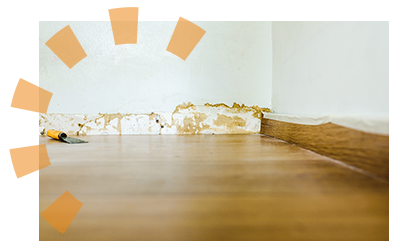
What Else to Look for Inside Your Wall
Now is the time to figure out what’s inside your wall and safely prepare to knock it down. Walls that contain HVAC vents, plumbing or electrical should be removed with caution.
If your wall has an electrical outlet, hiring a professional is usually the safest option. This also applies to any piping or ventilation in your walls. Have a contractor to eliminate, move or cap off any utilities to avoid damage or code violations.

If your home was built before 1978, make sure to take proper precautions to assess your walls for asbestos and lead paint.
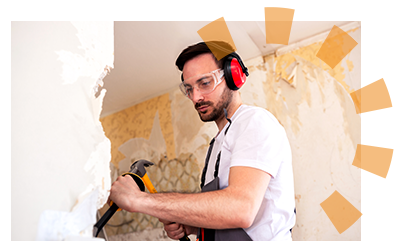
Step 3: Begin Knocking Down the Wall
Once you’ve determined your wall isn’t load bearing and doesn’t have any important plumbing or electrical running through it, the fun part begins — demolition.
- Outline the area you are tearing down with a pencil if you are only removing a section of the wall.
- Cut the junction with a utility knife between the wall you want to remove, the ceiling and other adjacent walls.
- Create a small starter hole in the drywall with a sledgehammer.
- Remove panels of drywall from between studs using your reciprocating saw.
- Get rid of insulation if you encounter it, however it’s unlikely for interior walls.
- Remove drywall from the other side of the wall once all the drywall is removed from the first side. Stay on the same side to see the studs and cut accurately.
Step 4: Cut and Remove Studs and Plates
Cut through the studs at the bottom of the wall with a reciprocating saw. Ask one of your volunteers to help by holding the stud in place as you cut. Once you have cut through the stud and nails, pull it out.
When all the studs are gone, you'll need to remove the top and base plates. Use the pry bar to remove the top plate first. Have your helper hold the top plate in place so it doesn’t fall, and repeat the same process to get rid of the base.


Cut sections that you can remove in large, single pieces. And to save yourself from a tripping hazard and cleanup later, take them out to the dumpster as you remove each piece.
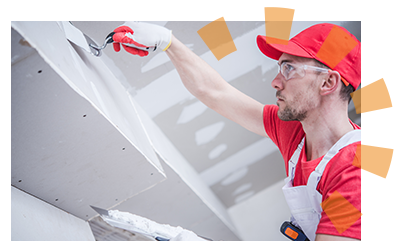
Step 5: Repair Your Ceiling and Floor
Now that you’ve cleared the way, it’s time to start bringing your space together. Repaint your whole ceiling to guarantee a cohesive appearance. If you plan to redo your floors, pick the best flooring option for your family in the new, open space. There are many options for family-friendly floors that hold up over time. Hardwood, carpet or bamboo are some popular options to consider.
Patch the Ceiling Where the Wall Was Removed
- Insert wood strips across the hole so they lay in the ceiling to bridge the gap.
- Screw both ends of each strip to the existing ceiling with the drill to make sure they are secure.
- Cut a piece of drywall a quarter of an inch smaller than the hole and secure it to the strips using screws.
- Spread drywall compound around the edges of the patched hole. Push drywall tape into the wet compound, then add another layer of compound and smooth it out.
- Repeat this process to patch the wall depending on the placement of the wall you removed.
- Apply drywall sealer and primer to finish.

Repair Your Floor
- Carpet or Linoleum: If you can easily match your carpet or linoleum with scraps you have on hand, you can fix the exposed patch or hire a professional to repair the hole.
- Hardwood: Older hardwood floors are difficult to patch between rooms because the wood will be harder to match.
To make sure your flooring looks seamless for either of these repairs, consider hiring a professional for the job.
Time to Enjoy Your New Space
Removing an interior wall can totally transform a space by allowing more natural light to shine through and making your home seem larger overall.
Have more walls to knock down? Check out our other guides with specific tips for plaster walls, wood paneling and more.
What Do You Think?
Are you knocking down a wall in your home? We're listening. Head over to Twitter or Facebook, and use #dumpstersblog to join the conversation.

